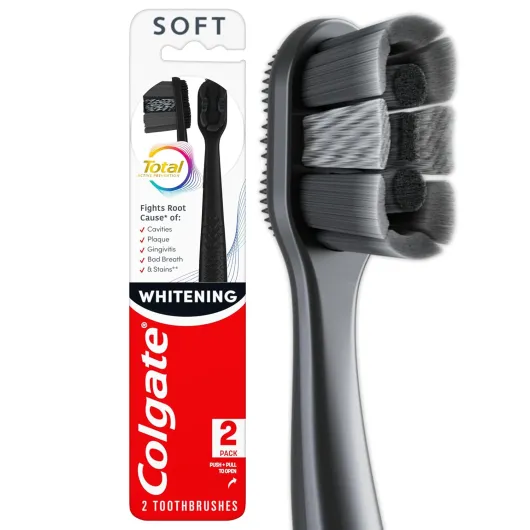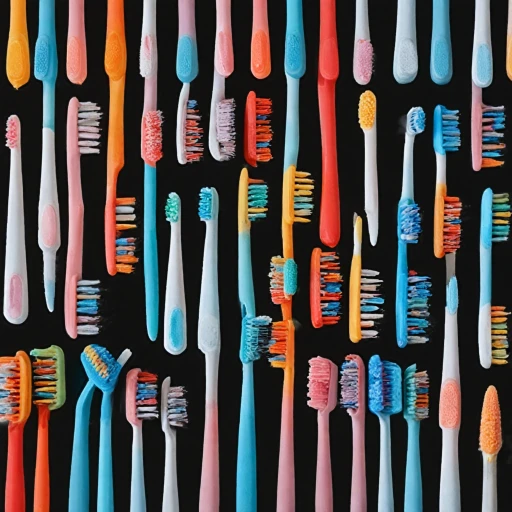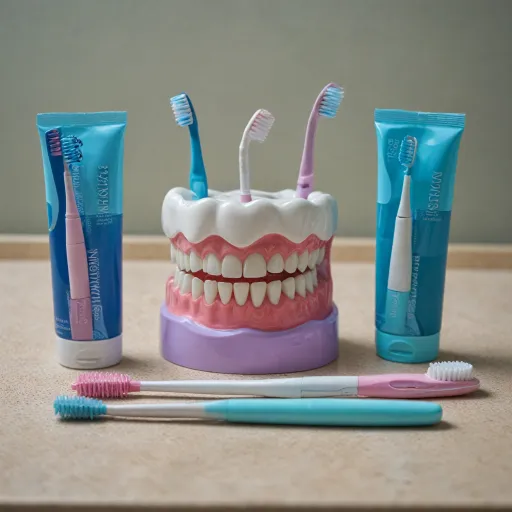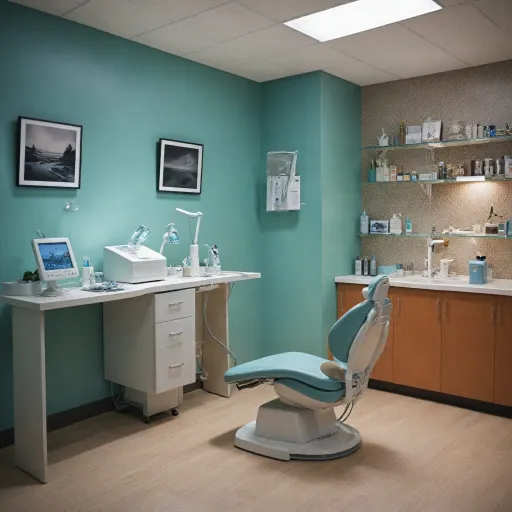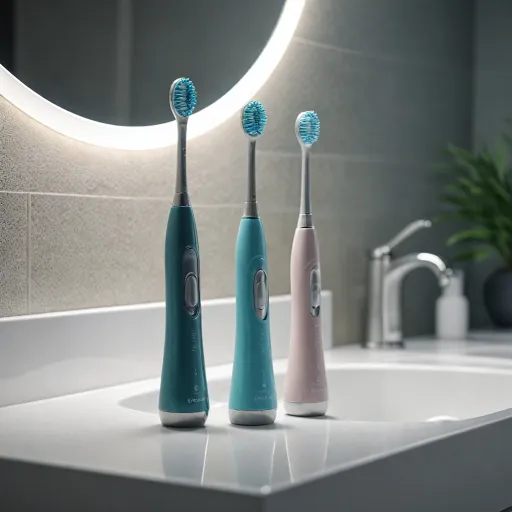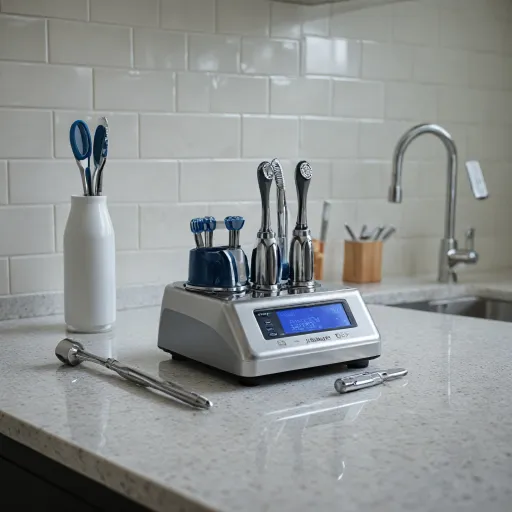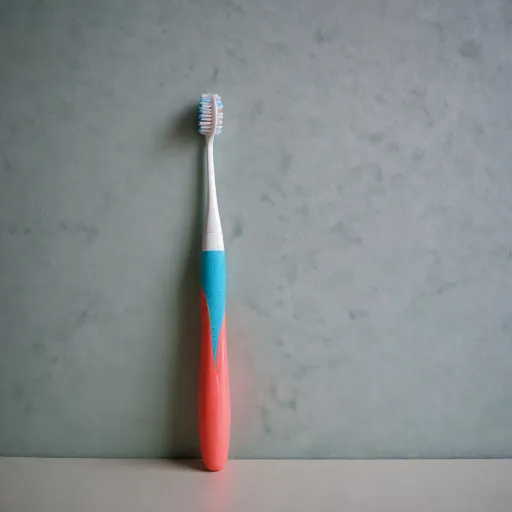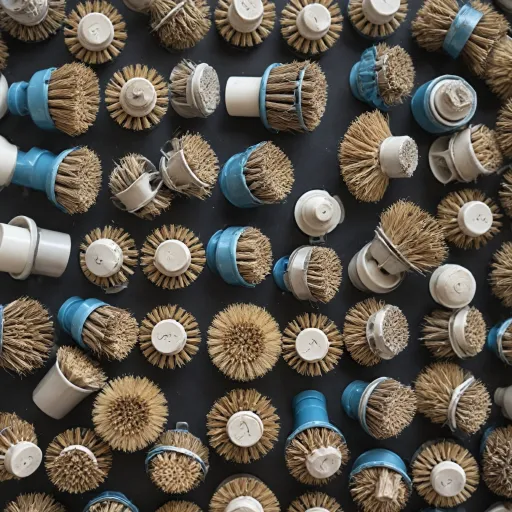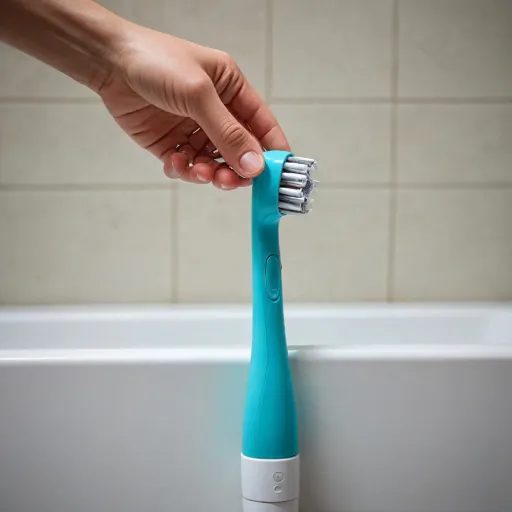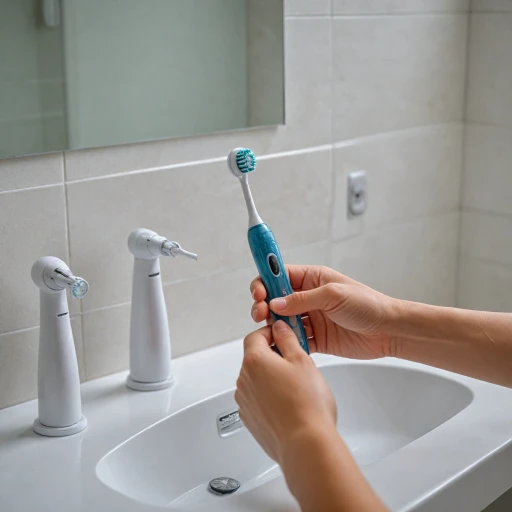
Understanding receding gums and their causes
What happens when gums start to recede?
Receding gums, also known as gum recession, occur when the gum tissue surrounding your teeth pulls back or wears away. This exposes more of the tooth or even its root, making teeth and gums more vulnerable to sensitivity, decay, and even tooth loss. Gum recession is a common dental concern, especially for adults, and can be caused by several factors.
Main causes of gum recession
- Brushing too hard or using a hard-bristled toothbrush: Aggressive brushing or using a toothbrush with stiff bristles can wear down gum tissue over time.
- Poor oral hygiene: Plaque buildup can lead to gum disease, which is a leading cause of receding gums.
- Genetics: Some people are more prone to gum issues due to their genetic makeup.
- Teeth grinding or clenching: This puts extra pressure on the gums and can contribute to recession.
- Misaligned teeth or bite: Uneven pressure on the gums can cause them to recede.
- Smoking or tobacco use: These habits can damage gum tissue and slow healing.
Why receding gums matter for your oral health
When gums recede, the exposed tooth roots can become sensitive to hot, cold, or sweet foods. This can make daily brushing uncomfortable, leading some people to avoid cleaning the affected area, which only makes things worse. Over time, untreated gum recession can increase the risk of cavities, infection, and even tooth loss. That’s why choosing the best toothbrush and brushing technique is so important for people with sensitive teeth and gums.
For those experiencing gum recession, switching to a soft bristle toothbrush—especially an electric toothbrush designed for sensitive gums—can make a big difference. These products are gentler on the gums and help prevent further damage. If you want to learn more about the connection between gum health and brushing, check out this guide on choosing the right electric toothbrush to combat gingivitis.
In the next sections, we’ll look at why soft bristles matter, what features to look for in an electric toothbrush, and how to brush effectively to protect your teeth and gums.
Why soft bristles matter for sensitive gums
The impact of bristle softness on gum health
When gums start to recede, they become more sensitive and vulnerable to damage. Using the wrong toothbrush can make things worse, especially if the bristles are too hard. Soft bristles are recommended by dental professionals for people with gum recession because they clean teeth and gums gently, reducing the risk of irritation and further gum loss. Hard bristles, on the other hand, can wear down enamel and aggravate sensitive teeth and gums.
How soft bristles protect teeth and gums
Soft bristle toothbrushes, whether manual or electric, are designed to flex and adapt to the shape of your teeth and gum line. This flexibility helps remove plaque without causing trauma to delicate gum tissue. For those with receding gums, choosing a brush with ultra soft bristles can make daily brushing more comfortable and effective. Many electric toothbrushes now offer brush heads specifically made for sensitive teeth and gums, such as the Philips Sonicare ProtectiveClean series, which is often highlighted in customer reviews for its gentle cleaning action.
- Soft bristles reduce the risk of gum recession and enamel erosion
- They help prevent bleeding and discomfort during brushing
- Electric toothbrushes with pressure sensors can alert you if you’re brushing too hard, further protecting your gums
What to look for in a soft bristle toothbrush
When searching for the best toothbrush for receding gums, focus on products labeled as “soft” or “ultra soft.” Check the product description for features like rounded bristle tips, which are gentler on the gum line. Electric toothbrushes often come with multiple brush head options, so look for those designed for sensitive teeth and gums. A travel case can also be useful for maintaining brush hygiene on the go.
For a deeper dive into what matters when selecting a toothbrush for gum health, including comparisons between manual and electric options, explore this guide on choosing the right toothbrush for periodontal disease.
Key features to look for in an electric toothbrush
What to Look for in an Electric Toothbrush for Sensitive Gums
When you have receding gums, choosing the best electric toothbrush can make a real difference in your daily oral care. Not all toothbrushes are created equal, and certain features are especially important for protecting sensitive teeth and gums. Here’s what to consider when selecting a product designed for gum recession:
- Ultra Soft Bristles: Soft bristles are essential for gentle cleaning. They help avoid further irritation or damage to sensitive gum tissue. Look for brush heads labeled as “ultra soft” or “sensitive.”
- Pressure Sensor: Many modern electric toothbrushes include a pressure sensor. This feature alerts you if you’re brushing too hard, which is crucial for preventing further gum recession and protecting teeth gums.
- Multiple Cleaning Modes: Some models offer modes specifically for sensitive teeth or gum care. These settings use lower intensity vibrations, making brushing more comfortable for those with gum issues.
- Brush Head Design: A compact brush head can reach tricky areas along the gumline without causing discomfort. Philips Sonicare and other brands offer heads designed for gentle yet effective cleaning.
- Timer and Pacer: Built-in timers ensure you brush for the dentist-recommended two minutes. Pacers help you move evenly across all areas of your mouth, supporting thorough cleaning.
- Travel Case: If you travel often, a sturdy travel case keeps your toothbrush and extra heads clean and protected.
- Customer Reviews and Ratings: Checking customer reviews and star ratings can give you insight into real-world performance. Look for feedback from users with receding gums or sensitive teeth.
- Product Description Transparency: Reliable brands provide clear product descriptions, including details about bristle softness, pressure sensors, and compatibility with sensitive teeth.
Some electric toothbrushes, like the Sonicare ProtectiveClean series, are frequently recommended by dental professionals for their gentle action and advanced features. The best toothbrush for you will combine soft bristles, a pressure sensor, and a comfortable grip, making daily brushing both safe and effective.
For those interested in enhancing their oral routine, consider a toothbrush featuring a tongue cleaner to help maintain fresh breath and a cleaner mouth overall.
| Feature | Why It Matters |
|---|---|
| Ultra Soft Bristles | Protects sensitive gums and prevents further gum recession |
| Pressure Sensor | Alerts you to excessive brushing force |
| Multiple Modes | Allows customization for sensitive teeth and gums |
| Compact Brush Head | Improves access to gumline and hard-to-reach areas |
| Travel Case | Keeps your toothbrush clean and protected on the go |
Comparing manual vs. electric toothbrushes for gum health
Manual or Electric: Which Is Better for Gum Health?
When it comes to caring for receding gums, the choice between a manual toothbrush and an electric toothbrush can make a noticeable difference. Both types aim to keep your teeth and gums clean, but their effectiveness varies, especially for those with sensitive teeth or gum recession.
- Consistency and Technique: Manual toothbrushes rely heavily on your brushing technique. Many people brush too hard or miss areas, which can worsen gum recession. Electric toothbrushes, especially those with a pressure sensor, help you maintain gentle, even pressure, reducing the risk of further gum damage.
- Cleaning Efficiency: Studies show that electric toothbrushes, such as the Philips Sonicare series, often remove more plaque than manual toothbrushes. Their oscillating or sonic movements help clean along the gum line and between teeth more effectively, which is crucial for those with receding gums.
- Soft Bristles and Brush Heads: Both manual and electric toothbrushes offer soft or ultra soft bristles, but electric models often have specialized brush heads designed for sensitive teeth and gums. For example, the Sonicare ProtectiveClean series features brush heads that are gentle yet thorough.
- Features for Sensitive Gums: Many electric toothbrushes come with modes for sensitive teeth, timers, and travel cases, making them convenient and adaptable. Manual toothbrushes are simpler but lack these advanced features.
- Customer Reviews and Ratings: Looking at customer reviews, electric toothbrushes for receding gums often receive higher stars for comfort and effectiveness. Product descriptions frequently highlight gum care features, which can help you choose the best toothbrush for your needs.
| Feature | Manual Toothbrush | Electric Toothbrush |
|---|---|---|
| Pressure Control | No | Yes (with pressure sensor) |
| Soft Bristle Options | Yes | Yes (specialized brush heads) |
| Cleaning Modes | No | Yes (sensitive, gum care, etc.) |
| Travel Case | Rare | Often included |
| Customer Reviews | Mixed | Often higher for gum care |
For those with receding gums, electric toothbrushes with ultra soft bristles, pressure sensors, and specialized brush heads are often considered the best choice. They help protect your gums while ensuring a thorough clean. However, the most important factor is using a toothbrush that feels comfortable and encourages regular, gentle brushing to support your oral health.
Tips for brushing with receding gums
Gentle Brushing Techniques for Sensitive Gums
When dealing with receding gums, the way you brush is just as important as the toothbrush you use. Using the best soft bristle electric toothbrush can help, but technique matters to avoid further gum recession and protect sensitive teeth.
- Use minimal pressure: Applying too much force can damage both gums and enamel. Many electric toothbrushes, like the Philips Sonicare ProtectiveClean series, feature a pressure sensor that alerts you if you’re pressing too hard.
- Let the brush do the work: With an electric toothbrush, there’s no need to scrub. Gently guide the brush head along your teeth and gum line, allowing the bristles to clean effectively.
- Angle the brush correctly: Hold the toothbrush at a 45-degree angle to your gum line. This helps the ultra soft bristles reach the area where gums meet teeth, removing plaque without irritation.
- Brush for the recommended time: Most dental professionals suggest brushing for two minutes. Many electric toothbrushes include a timer to help you stay on track.
- Replace brush heads regularly: Worn bristles can be harsh on sensitive gums. Change your brush head every three months, or sooner if the bristles look frayed.
Additional Tips for Protecting Your Gums
- Choose the right product: Look for toothbrushes specifically designed for sensitive teeth and gums, with soft or ultra soft bristles. Customer reviews and product descriptions can help identify the best toothbrush for your needs.
- Consider a travel case: If you travel frequently, a travel case helps keep your toothbrush clean and protects the bristles from damage.
- Be consistent: Brush twice daily and don’t forget to floss. Consistency is key to maintaining oral health and preventing further gum recession.
Whether you use a manual toothbrush or an electric toothbrush, gentle brushing and the right technique are essential for keeping your teeth and gums healthy. Always consult your dental professional for personalized advice, especially if you notice signs of gum recession or sensitivity.
Recommended soft bristle electric toothbrushes for receding gums
Top-Rated Electric Toothbrushes for Gentle Gum Care
When it comes to receding gums, choosing the best toothbrush can make a real difference in your oral health. Electric toothbrushes with ultra soft bristles and smart features are often recommended by dental professionals for people with sensitive teeth and gum recession. Here’s a look at some of the most trusted products, based on customer reviews and expert recommendations.| Product | Key Features | Customer Rating | Notable Details |
|---|---|---|---|
| Philips Sonicare ProtectiveClean 6100 |
|
4.6/5 stars | Highly rated for sensitive teeth and effective plaque removal |
| Oral-B Gum Care Electric Toothbrush Series |
|
4.5/5 stars | Recommended for those with gum recession and sensitive gums |
| Sonicare Electric Toothbrush 4100 Series |
|
4.7/5 stars | Praised for comfort and ease of use by customers with receding gums |
What Makes These Toothbrushes Stand Out?
- Soft bristles: All these electric toothbrushes use ultra soft bristles to minimize irritation and protect delicate gum tissue.
- Pressure sensors: Built-in pressure sensors alert you if you’re brushing too hard, which is crucial for preventing further gum recession.
- Customizable settings: Multiple brushing modes and intensity levels help you find the most comfortable clean for your teeth and gums.
- Travel case: A travel case is a practical addition for maintaining your oral care routine on the go.

